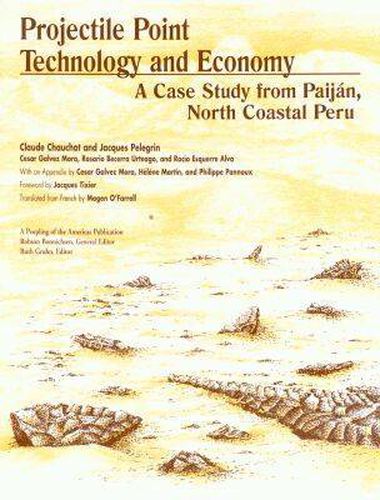Readings Newsletter
Become a Readings Member to make your shopping experience even easier.
Sign in or sign up for free!
You’re not far away from qualifying for FREE standard shipping within Australia
You’ve qualified for FREE standard shipping within Australia
The cart is loading…






The Paijan complex, of late Pleistocene to early Holocene age, is known from numerous open-air sites and one rock shelter and occurs more than one thousand km off the Peruvian coastal desert. Claude Chauchat and his team present a detailed archaeological case study of the Cupisnique region at the Pampa de Los Fosilies locality on the north coast of Peru. This volume exemplifies the use of the Chaine operationaire approach, which views lithic assemblages as a succession of technical actions beginning at the moment of raw material acquisition, manufacture, utilization, and finally abandonment of tools. This case study documents raw material use at flaking loci, description of cores, flakes, flake tools, limaces, bifaces, and lithic reduction practices of the Paijan site occupants. In addition to providing a detailed history of stone tool flaking activities, raw material acquisition patterns combined with regional survey data provide the foundation for inferring mobility models for the Paijan people.
$9.00 standard shipping within Australia
FREE standard shipping within Australia for orders over $100.00
Express & International shipping calculated at checkout
The Paijan complex, of late Pleistocene to early Holocene age, is known from numerous open-air sites and one rock shelter and occurs more than one thousand km off the Peruvian coastal desert. Claude Chauchat and his team present a detailed archaeological case study of the Cupisnique region at the Pampa de Los Fosilies locality on the north coast of Peru. This volume exemplifies the use of the Chaine operationaire approach, which views lithic assemblages as a succession of technical actions beginning at the moment of raw material acquisition, manufacture, utilization, and finally abandonment of tools. This case study documents raw material use at flaking loci, description of cores, flakes, flake tools, limaces, bifaces, and lithic reduction practices of the Paijan site occupants. In addition to providing a detailed history of stone tool flaking activities, raw material acquisition patterns combined with regional survey data provide the foundation for inferring mobility models for the Paijan people.